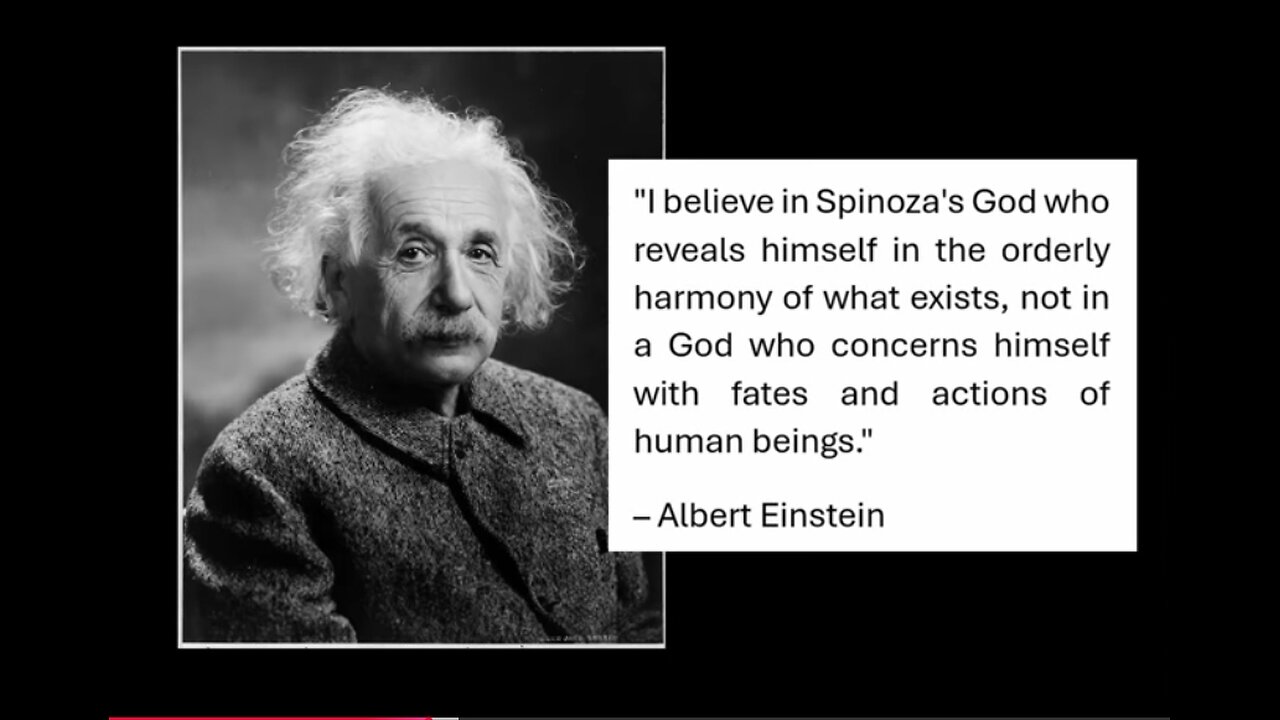Premium Only Content

WHAT IS INNER MONOLOG AND WHAT IS PERSUASIVE TECHNOLOGY
This directly corresponds to Livelsberger Emails, Cybertruck Bomb, Iranian Missiles, & Questions
Hear me out about something that is not being allowed to be addressed in the main, nor being remembered, or even remotely talking about it's real problematic role in the current climate and energy exchange in our current understanding of what is going on in many different areas of our country and in point of fact, the entire world for that matter.
The persuasive technology embedded within the very fabric of our online discourse and social media platforms is a pernicious force that we ignore at our peril. It is the proverbial elephant in the room that must be confronted head-on before we can even begin to address the myriad challenges facing our society today.
Failure to do so will only lead us further down the dark path of division, manipulation, and ultimately, the erosion of our cherished freedoms. The algorithms and artificial intelligence that underpin these platforms are exquisitely tuned to exploit our deepest psychological vulnerabilities, hijacking our attention and shaping our perceptions in ways that serve the financial interests of the tech giants while sowing chaos and confusion in the real world.
We are caught in a vicious cycle, where the polarizing content that garners the most engagement is amplified and spread virally, drowning out nuance, reason, and truth. Meanwhile, bad actors weaponize these tools to wage information warfare and undermine the very foundations of our democracy. If we are to have any hope of breaking free from this digital dystopia, we must first acknowledge the true nature and scale of the problem. Only then can we begin the hard work of developing countermeasures and regulating these technologies in the public interest.
But time is running out. With each passing day, the persuasive technology grows more sophisticated and pervasive, tightening its grip on our minds and our society.
We must act now, before it's too late, to reclaim our agency and our shared reality from the algorithms that threaten to tear us apart.
Secondly, I would like to devote a brief period to examining the problem from multiple perspectives, drawing upon my prior experience in the railway industry. This was before I was unjustly terminated for my candid remarks regarding vaccine safety - remarks which preceded any widespread willingness to address this critical issue.
As someone with extensive experience in the transportation industry, I've come to understand certain realities that many people overlook or fail to fully appreciate. Consider the analogy of driving down a road or riding a train - when we're distracted, engrossed in conversation or music, we may miss the warning signs that indicate an impending danger, like the cliff's edge just ahead. In that moment, will we have the presence of mind and reaction time needed to apply the brakes and avoid careening over the precipice? These are the kinds of insights that my experience in travel, transportation, and infrastructure maintenance has afforded me - lessons that may not be obvious to the casual observer, but are critical for navigating life's metaphorical cliffs and chasms.
If you're familiar with trains or speed restrictions on the rails, you'll know that when a track defect is discovered that doesn't meet safety codes, a speed restriction must be imposed on that section of track before repairs can be made. This is because trains require considerable distance to slow down, let alone come to a complete stop.
We use a formula to calculate the braking distance required, so that the train engineer is aware of the speed restrictions in the defective area. Trains simply cannot stop or slow down quickly enough to avoid derailment or other issues posed by track defects. And of course, they have no ability to make evasive maneuvers
Trains require significant distance to slow down, let alone come to a complete stop. There is a formula that engineers use to calculate the braking distance required based on the train's speed, the track's curvature, and other factors. This formula, known as the V-max formula, is crucial for track maintenance foremen to understand.
By knowing the train's speed in a given area, the track's curves and super-elevation, and using the appropriate mathematical formula, foremen can strategically place speed restriction signs at the correct braking distance from a defective section of track. This allows the engineer to slow the train down to the appropriate speed before reaching the problem area, preventing derailment or other issues.
Trains cannot simply stop or slow down on a dime to avoid obstacles. Their inability to turn sharply further complicates matters. That is why the precise placement of those speed restriction signs, calculated using the V-max formula, is so critical. It ensures the train can safely negotiate any track defects or other hazards ahead.
The speed signs along the tracks are not like the road signs you see while driving. Train engineers must begin braking at a specific distance from the speed limit to safely slow the train. They need to know when they can release the brakes after passing the speed-restricted area, so they can return to normal speeds and arrive at the next station on time without disrupting passengers trying to reach their destinations.
This is a critical issue, because someone unfamiliar with train operations might assume the same "road" driving rules apply to rail. If they tried to drive on the tracks, they would have no idea where to apply the brakes to avoid derailing a train carrying hundreds of innocent passengers. These everyday riders have no insight into the complex calculations and procedures train engineers must follow to ensure safe, on-time service. They simply board the train, oblivious to the specialized knowledge required to operate it. Even if speed restrictions are put in place due to track defects, passengers are unlikely to notice the train slowing down or understand the reason behind it. They will go through their lives unaware of the intricate workings of the transportation system they rely on daily, unless they have specialized training in railway operations.
Imagine you're driving down the road, engaged in an enjoyable conversation with your passengers. However, you become distracted and fail to notice the signs warning of a cliff ahead. Similarly, a train engineer may be unaware of a defect in the tracks, unable to apply the brakes in time to avoid a catastrophic crash. In both cases, a momentary lack of attention to critical information can have devastating consequences - causing harm to yourself, your passengers, and those relying on the train to reach their destinations safely and on time. Maintaining vigilance and heeding relevant signs or signals is paramount, lest we jeopardize the well-being of ourselves and others through carelessness or oversight.
The people using social media platforms are often unaware of the underlying technology, persuasive design, and lack of transparency that these platforms employ. Without any engineering expertise or understanding of media manipulation, the average user blindly navigates these digital spaces every day, oblivious to the potential dangers ahead. They lack the critical knowledge and awareness needed to recognize the warning signs, let alone apply the proper "v-max" braking techniques to avoid an impending disaster. Tragically, these unsuspecting individuals hurtle down a path of potential peril, with no one to inform them of the importance of slowing down and regaining control of their digital journey before it's too late.
The fact is, no one has made a concerted effort to properly inform, educate and alert their followers and podcast listeners about the dangers of persuasive technology and social media platforms. These platforms are engineered to keep users unaware that they are being manipulated, with those in control knowing far more about the user than the user knows about themselves or the path they are traveling down.
Yet, no one seems willing to address this critical issue and shine a light on the defects inherent in these systems. Without clear signposts to warn users of the imminent dangers, millions continue to hurtle down these paths, unaware of the risks of derailment and crash.
The time has come to erect those warning signs, to educate the public on the significance of the symbols and operating conditions they face. Only then can we hope to avoid the catastrophic harms that will result from users' continued ignorance of the defects in the very infrastructure they rely upon daily. The stakes are high, and the need for action is urgent.
To effectively address a complex problem, you must first confront the root causes you have been neglecting or avoiding. Without understanding the foundational factors - the time, distance, and formulas involved - you will be unable to properly identify and rectify the initial defects. Trying to solve the problem from a distance, without grappling with that core source, is a futile endeavor. Only by understanding and addressing the primary drivers can you then begin to properly apply the necessary adjustments and corrections.
-
 LIVE
LIVE
We Like Shooting
13 hours agoWe Like Shooting 628 (Gun Podcast)
153 watching -
 1:09:26
1:09:26
Glenn Greenwald
4 hours agoTrump's Shifting Immigration and H-1B Policies: With Journalist Lee Fang and Political Science Professor Ron Hira | SYSTEM UPDATE #515
130K15 -
 LIVE
LIVE
LFA TV
23 hours agoLFA TV ALL DAY STREAM - MONDAY 9/15/25
766 watching -
 54:12
54:12
Donald Trump Jr.
3 hours agoCharlie's Vision. Our Future. | TRIGGERED Ep274
167K107 -
 1:03:35
1:03:35
BonginoReport
5 hours agoKirk’s Alleged Killer Dating Hateful Transgender??? - Nightly Scroll w/ Hayley Caronia (Ep.134)
102K116 -
 1:01:12
1:01:12
The Nick DiPaolo Show Channel
6 hours agoKirk Assassination Exposes Insane Left | The Nick Di Paolo Show #1793
78.9K20 -
 1:48:38
1:48:38
The Mike Schwartz Show
5 hours agoTHE MIKE SCHWARTZ SHOW Evening Edition 09-15-2025
45.7K11 -
 LIVE
LIVE
LIVE WITH CHRIS'WORLD
6 hours agoLIVE WITH CHRIS'WORLD - They Just Created 1 Million Charlie Kirks
72 watching -
 2:07:48
2:07:48
Quite Frankly
8 hours agoStaggering Evil, Official Stories & Open Lines | Rich Baris 9/15/25
31.7K5 -
 1:09:33
1:09:33
TheCrucible
6 hours agoThe Extravaganza! EP: 36 (9/15/25)
173K20